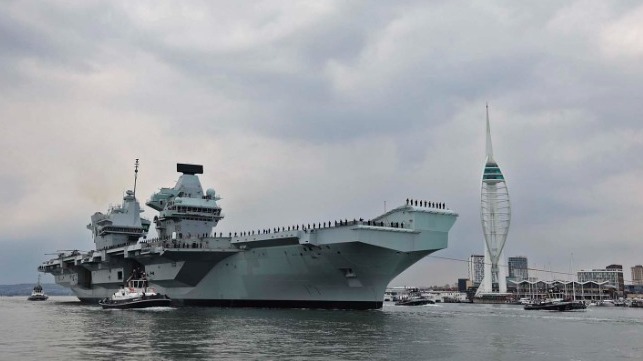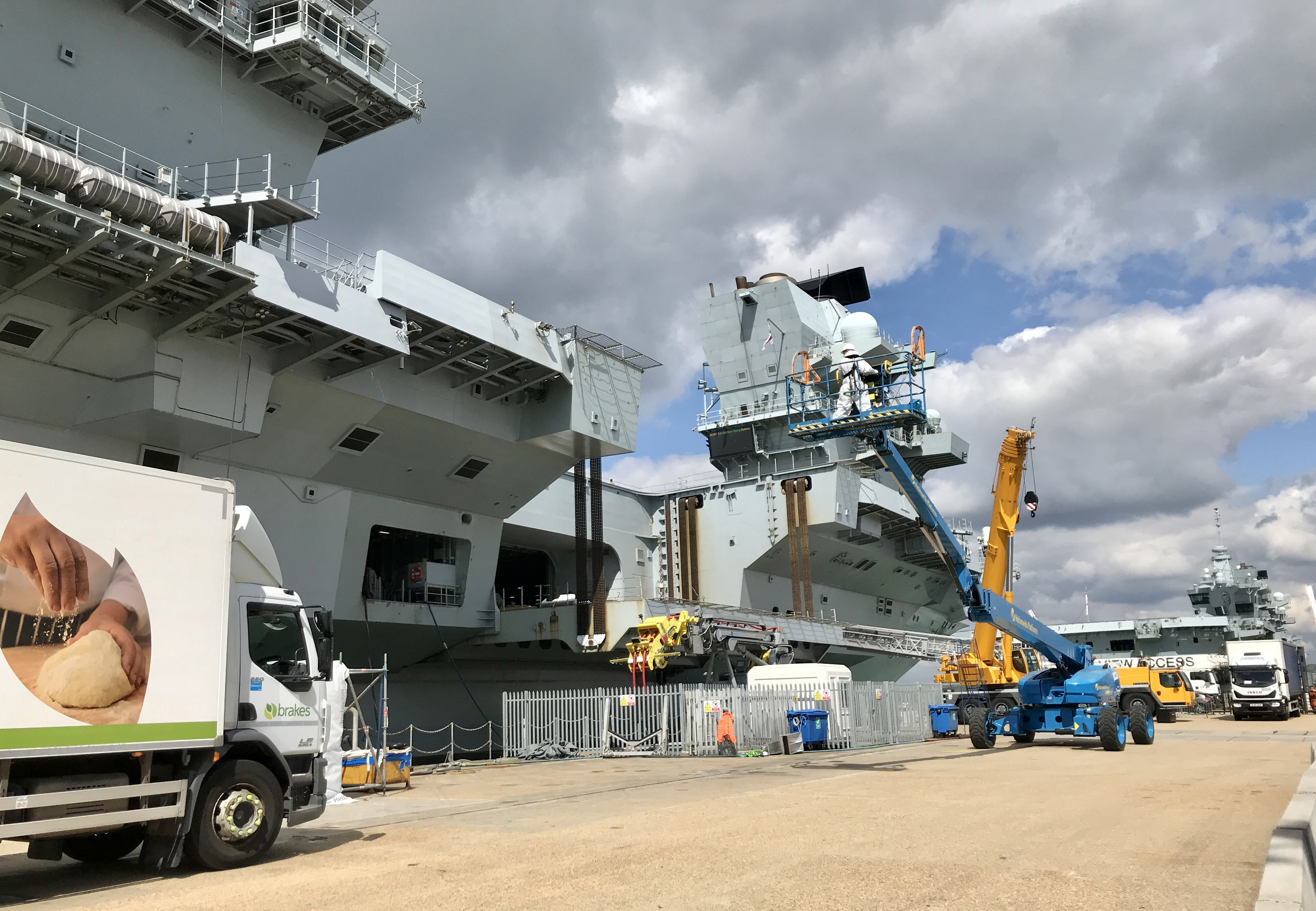HMS Queen Elizabeth Sails in Preparation for Asia-Pacific Deployment

Aircraft carrier HMS Queen Elizabeth has set sail from Portsmouth as the UK Carrier Strike Group prepares to join allied forces for its largest and most demanding exercise to date.
HMS Queen Elizabeth will be accompanied by destroyers HMS Diamond and HMS Defender, frigates HMS Richmond and HMS Kent and US Navy destroyer USS The Sullivans. Meanwhile, Royal Fleet Auxiliary ships Fort Victoria and Tidespring will keep the Strike Group supplied with fuel, food, stores and ammunition.
The exercise will involve more than 20 warships, three submarines and 150 aircraft from 11 nations and is a final test for the strike group ahead of its first operational deployment to the Mediterranean, Indian Ocean and Asia Pacific.
The exercise, which will run for two weeks, will see the task group pitted against warships from NATO’s Standing Maritime Group 1 in waters off north-west Scotland to prove it is capable of undertaking high intensity operations against the most demanding adversaries.
“The advent of the UK Carrier Strike Group represents a substantial new injection of fifth generation combat power into the defense of the Euro-Atlantic region," said Commodore Steve Moorhouse, Commander UK Carrier Strike Group. “Exercise Strike Warrior is an opportunity prove to ourselves, and to the world, that we have what it takes to act as cohesive and potent fighting force at sea, under the water, in the air and over the land."
At Portsmouth, head of Naval Base Operations Steve Hopper says the shore team has been working hard to get the force ready for its sailing. “Whilst two months ago I was having sleepless nights worried that it wouldn’t happen, the people in the base, the people who man the gates, the chaperones who escort the lorries, the jetty managers, crane operators, security and everyone else involved have delivered," he said.


that matters most
Get the latest maritime news delivered to your inbox daily.
Planning for the resumption of carrier strike operations began about 12 years ago, designing a jetty able to accommodate the largest ships ever built for the Royal Navy and removing 3.5 million cubic meters of mud from the harbor so they could navigate it - and even building a power plant on the base to provide electricity to the carriers.
The final push to get Queen Elizabeth out to sea involved loading 924 pallets of food, 55 shipping containers, making about 400 crane lifts onto the ship, and embarking 250 U.S. Marines, plus Fleet Air Arm and Royal Air Force personnel.
